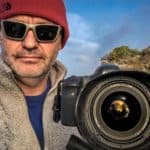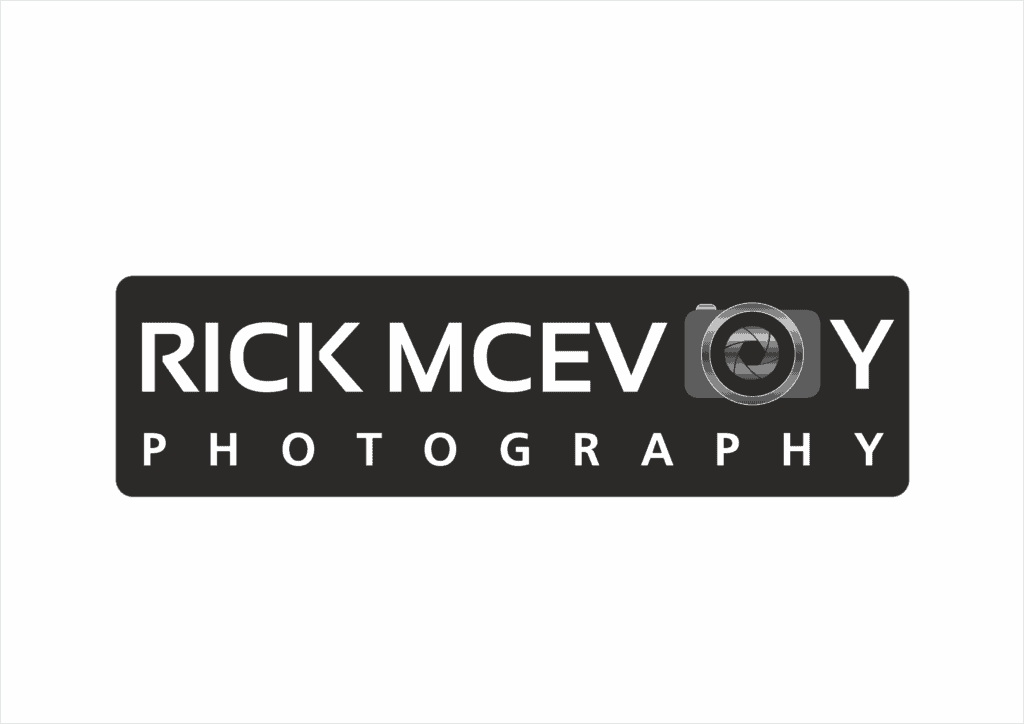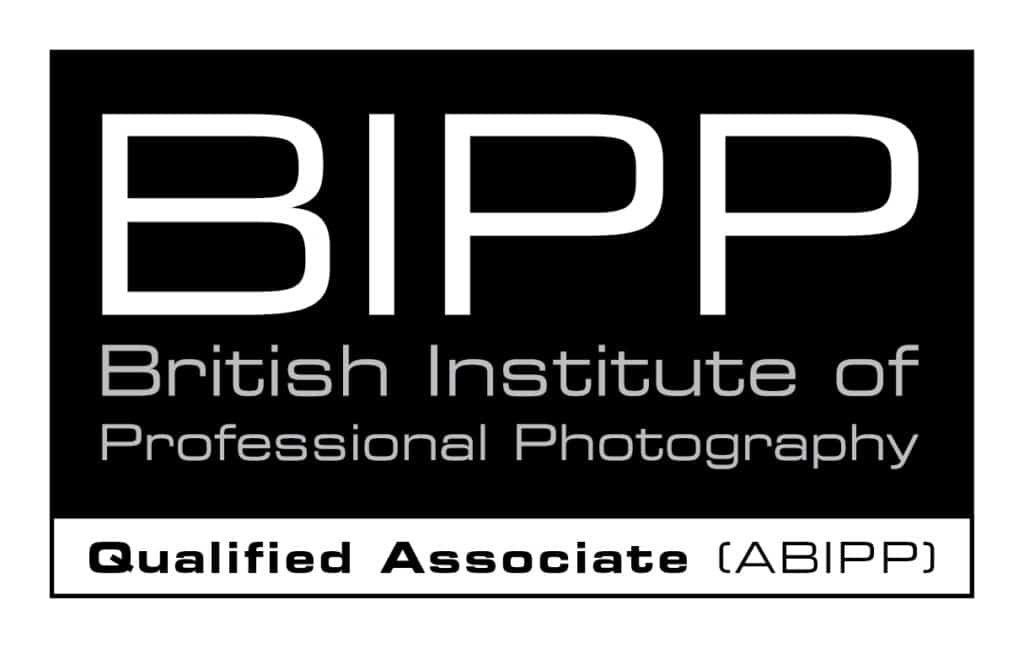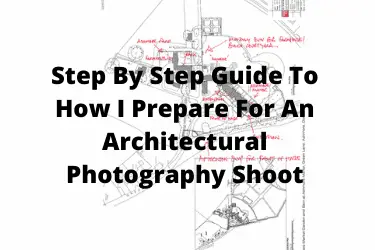I am enjoying my series of blog posts about the fundamentals of architectural photography. I was going to tell you in this post how I shoot architectural photography. But there was one more thing I wanted to share with you, the bit immediately before the shoot.
I prepare for an architectural photography shoot by agreeing the shot list which I carry with me. I carefully select, prepare and clean the gear that I will be using. I ensure that the shoot location is ready for me, and that I am able to gain access to take the photos I need to take. I check all the other external factors such as location, weather, traffic and time to ensure that I arrive on time and fully prepared to work as a professional architectural photographer.
I prepare everything in advance of a shoot.
Who am I?
Before I go on, it is rude to presume that you know who I am. I am Rick McEvoy, an architectural and construction photographer based in the UK. I am professionally qualified in photography ABIPP and construction MCIOB, so you are in safe hands with me ok?
Oh yes and I write about this stuff on my photography blog.
Do I really do all this stuff?
Yes I do. Not being properly prepared for a shoot is unprofessional. I have learnt a lot of hard lessons along the way, so yes, this is what I do for every shoot.
Brief
I have a copy of the brief on my iPad. This will have been discussed and agreed during the process of being appointed to carry out the shoot.
The brief is what I am being paid to do, for how much and on what terms and conditions. I will write about agreeing the brief in another post.
There is one thing that comes out of the brief that I take with me – the shot list.
Shot list
This is a list of the photos that I have to capture. These are the essential images.
I write down the shot list in a pocket sized notebook that I place in my camera bag. This has a pen attached to it. I used to check off the photos as I took them, but now I check at the end of a shot, to make sure I have got everything,
I also have the shot list in Google Keep on my phone.
Not saying that I am paranoid but I like to have everything properly covered. Turning up on a shoot without the shot list is not a good thing.
Timing
This is such an important thing. I am talking here about.
- Works status – planning the shoot for when the works are actually complete
- Site cleared – works complete and site cleared are not one and the same
- Ongoing site activities – as above, practical completion does not mean compete and finished.
- Client decant – as soon as the works are complete there is normally a client decant phase, the installation of furniture, fixtures and fittings.
- Sun orientation – where is the sub shining when I get there?
Weather
I try to plan for the best weather, but this is always a challenge in the UK. I do the best that I can, and draw the line at rain – unless the client wants the shoot when it is raining that is. Which has never happened.
I can live with dry and overcast, as I can replace the sky using wonderful Luminar. Check out my blog for more on this and to see lots of examples where I have done just this.
Location
Where is the site? How do I get there. Sure this is easy enough to find out these days but this still needs checking out.
I always arrive early for a shoot, and if I can start early great, if not I work on my iPad sat in my car.
So no travel stress for me and no wasted time – sorted!!
Access
Access to the site has to be sorted and agreed. Who with, what are the site rules? What are the PPE requirements?
Gear
I will write a separate detailed post about the gear that I use, and why, here is the stuff that I use and how I prepare it.
Camera
I clean the mirror box with a hurricane blower. I clean around the lens mounting too. And then I clean the outside of the camera body using the same things I use to clean my lenses.
I make sure that everything is set just how I want it – more on that in other blog posts.
Lenses
I clean the front and rear lens elements, including the inside of the front and rear lens caps.
I make sure the AF is set on all the lenses.
I try all the lenses on my camera, checking each fully and taking test shots.
I use Eclipse leans cleaning solution and Pec Pads.
Memory cards
I format all the memory cards in the camera that I am going to use. I place one empty memory card in the camera, and the remainder of the empty cards in a hard case with a yellow trim.
Batteries
I charge all the batteries then put them in my camera bag. One of the batteries I of course place in my camera.
I have 4 batteries always sully charged, along with a contingency car charger.
Other stuff
Loupe Viewer
I use a Loupe viewer – more on that in the next post. I clean is using the stuff I clean my lenses with.
Tripod
I make sure that all the parts of the tripod and head are tightened and working, and lubricate moving parts if needed.
Tripod Head
I do the same to the tripod head, and reset everything so the first time I use it is is level and ready to go.
L Bracket
Not a lot to do with this other than give it a quick check.
Platypod and small head
Same again, quick check that all is OK and all the bits that come with it are there.
Grey card
I just need to pack this.
Colour checker
Ditto
Bag
For work on site I use the Peak Design Everyday Backpack. This takes all the gear above, which is my core gear.
I pack my gear into the bag the night before.
And I pack my bag in exactly the same way every time.
I ensure that the fixing for my car keys is where I want it to be, so I do not have to worry about where my keys are or them irritating me in a pocket.
Spare gear
Everything else lives in Lowe Pro Magnum. I clean and check everything just like the above. This stuff might not get used but is still quickly but thoroughly checked.
PPE
- Boots – My boot laces have a life of their own – I adjust them so they do not bug me.
- High Vis – My own branded high vis needs packing away.
- Hard hat – Cleaned if needed and the strap checked.
- Safety glasses – cleaned and put in a soft case.
- Gloves – packed away – site gloves that I can use my camera with that is.
- CSCS card – safe in my wallet.
Preparation – me
- Sleep – a good nights sleep always helps.
- Hydration – drinking plenty of the water the day before and the day of the shoot keep me fresh
- Coffee – as does the caffeine in my beloved coffee which I am sure gives me an edge!
- Clothing – all the clothing I need so I am comfortable throughout the shoot.
- Car – fuel, screen wash, weekly tyre check. Address in Sat Nav,
- Time – checked more times than I care to admit – I hate being late!
- Traffic – as above
Alarms
I prepare everything the night before the shoot, and make sure I get a good nights sleep. Ok night night, and next week I will take you onto the day of the shoot!
Do you want to know more?
Well why not check out the other posts on my website? You can either go to the category pages in my blog, architectural photography and construction photography categories, or to my Work With Me page, and my Construction Photographer page, which have links to lots of related stuff.
Let’s not forget the video!
Yes there is a video for this post which you can watch on my You Tube channel.
Photography Explained Podcast
Yes I have my own podcast, the Photography Explained Podcast where I explain one photographic thing per episode in plain English in less than 10 minutes without the irrelevant detail.
Check it out – it won’t take more than 12 ¾ minutes for the average episode!
That’s all folks
Thanks for reading this post, which I hope you found interesting and informative.
Any questions get in touch via my website. It would be great to hear from you.
Cheers from me Rick



